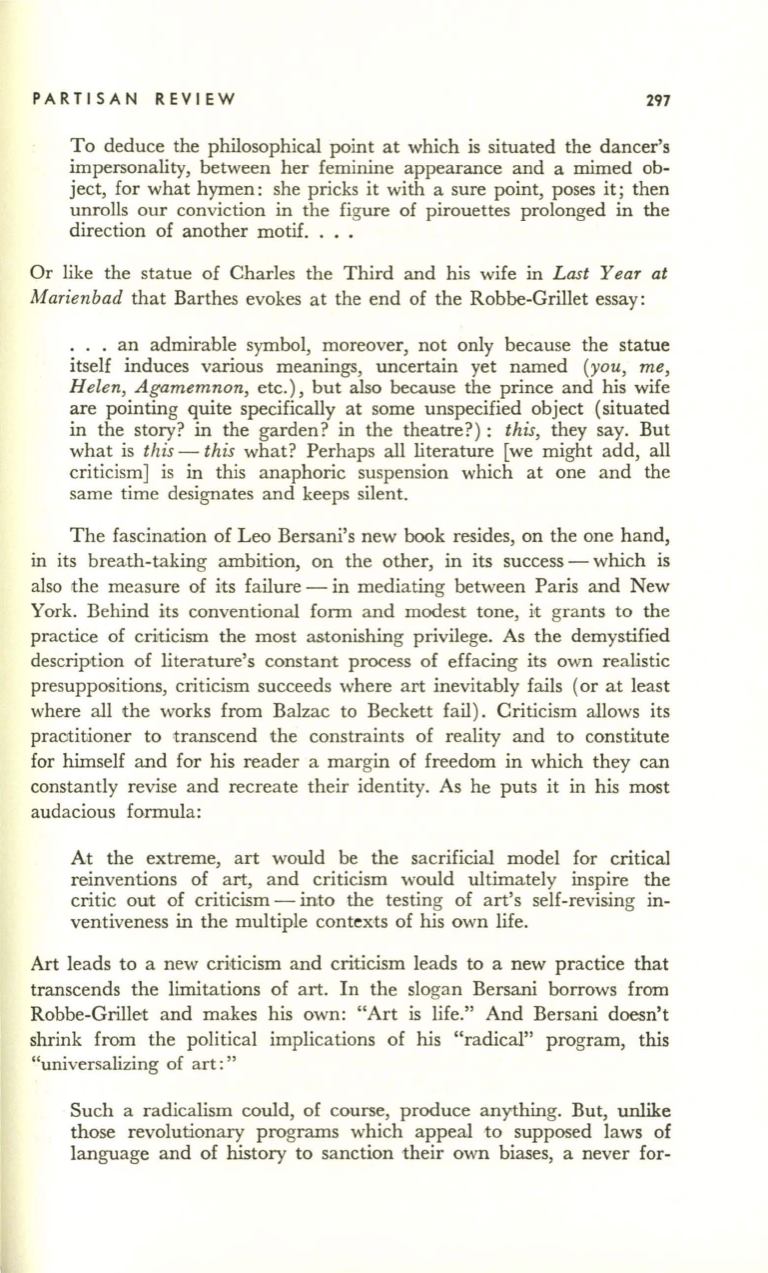
PARTISAN REVIEW
297
To deduce the philosophical point at which is situated the dancer's
impersonality, between her feminine appearance and a mimed ob–
ject, for what hymen: she pricks it with a sure point, poses it; then
unrolls our conviction in the figure of pirouettes prolonged in the
direction of another motif. . . .
Or like the statue of Charles the Third and his wife in
Last Year at
Marienbad
that Barthes evokes at the end of the Robbe-Grillet essay:
. . . an admirable symbol, moreover, not only because the statue
itself induces various meanings, uncertain yet named
(you, me,
Helen, Agamemnon,
etc.), but also because the prince and his wife
are pointing quite specifically at some unspecified object (situated
in the story? in the garden? in the theatre?):
this,
they say. But
what is
this
-
this
what? Perhaps all literature [we might add, all
criticism] is in this anaphoric suspension which at one and the
same time designates and keeps silent.
The fascinaJtion of Leo Bersani's new book resides, on the one hand,
in its breath-taking ambition, on the other, in its success - which is
also rthe measure of its failure - in mediating between Paris and New
York. Behind its conventional form and modest tone, it grants to the
practice of criticism the most as.tonishing privilege. As the demystified
description of literature's constant process of effacing its own realistic
presuppositions, criticism succeeds where art inevitably fails (or at least
where all the works from Balzac to Beckett fail). Criticism allows its
praotitioner to transcend the constraints of reality and to constitute
for himself and for his reader a margin of freedom in which they can
constantly revise and recreate their identi:ty. As he puts it in his most
audacious formula:
At the extreme, art would be the sacrificial model for critical
reinventions of art, and criticism would ultimately inspire the
critic out of criticism - into the testing of art's self-revising in–
ventiveness in the multiple contex'ts of his own life.
Art leads to a new criticism and criticism leads to a new practice that
transcends the limitations of art. In the slogan Bersani borrows from
Robbe-Grillet and makes his own: "Art is life." And Bersani doesn't
shrink from the political implications of his "radical" program, this
"universalizing of art:"
Such a radicalism could, of course, produce anything. But, unlike
those revolutionary programs which appeal ,to supposed laws of
language and of history to sanction their own biases, a never for-


